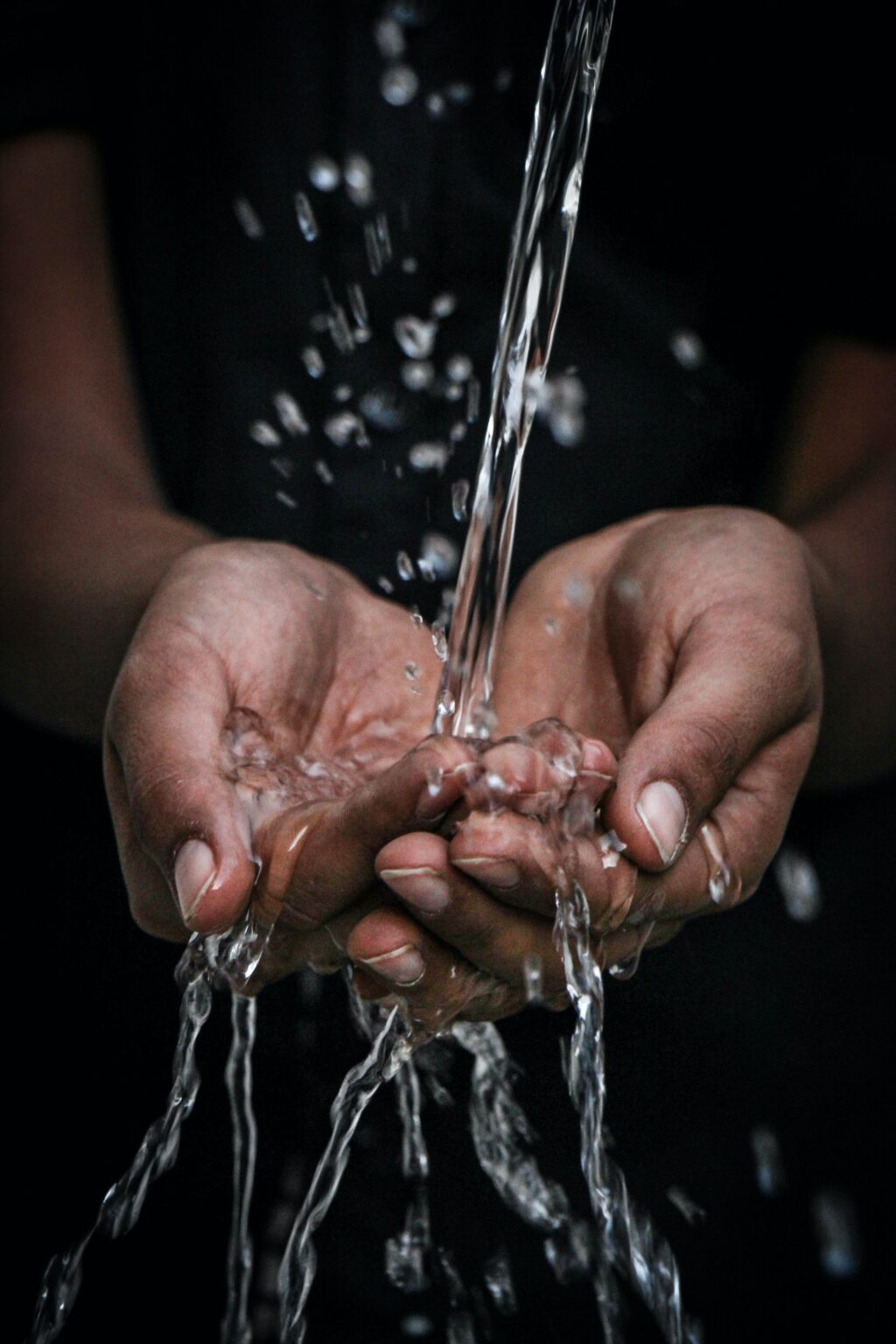Water is not only essential for life, but it’s also a fundamental human right, as stated by the UN. Access to safe and clean water is critical to our health, well-being, and the development of our communities.
Yet, despite water’s vital role in our lives, two billion people, more than one-quarter of the world’s population, live without safely managed water services. And without changes to our water policies, many more communities worldwide will face severe water insecurity issues.
Water and climate experts, infrastructure officials, and caring world citizens who recognize the importance of water and the need for sustainable management of this vital resource converged in New York earlier this year to speak, listen and learn at the UN 2023 Water Conference.
The conference coincided with World Water Day, reminding us that water is essential.
Expectations for Governments and NGOs to provide safe water to their populations run high. These entities cannot tackle water issues alone; the private sector must play a more significant role.
Discussing solutions for water management, water insecurity, and water access can and should happen at all levels: from the meeting halls of the United Nations to the dinner tables of families around the world and everywhere in between.
Nations of all sizes and economic stability face enormous challenges in providing and preserving suitable water sources for our needs. Addressing these challenges immediately is imperative.
IMAGE: UNSPLASH
Increasing Access To Clean Water Is Critical
Billions of people lack access to clean water, and this issue is only becoming more pressing as populations continue to grow and climate change exacerbates existing water scarcity problems. Preventable water-related diseases claim tens of thousands of lives, especially among babies and young children.
Every day, nearly 1,000 children die due to preventable water and sanitation-related diseases. Solutions to clean water access are desperately needed.
What can people and organizations do to ensure everyone can access safe water? Focusing on these three areas can increase global access to safe water.
Strategy 1: Create Increased Water Access And Capacity Through Partnerships
Many of the technical solutions needed to address water access challenges already exist. Scaling up and implementing these solutions requires partnerships with the right stakeholders.
Partnerships are crucial for success. Regulators, research institutions, and other players in the water sector need to work together. Technology works with people; it doesn’t work alone.
Sharing ideas and resources gives greater insight into the challenges ahead and brings better odds of developing solutions that can make a real difference in addressing the water access challenge.
Partnerships can create a positive change. For example, a partnership between Grundfos and World Vision is providing more Zambians access to clean water.
By replacing hand water pumps with solar-driven pumps in rural areas, the community significantly reduced the time it now takes to collect water and eliminated the physically demanding task of drawing water manually. World Vision Zambia called the results of this collaboration a “game changer.”
More partnerships like these are needed to address the lack of safe water across the globe. Businesses, NGOs, and local and national governments can save and change lives by combining forces and resources.
Countries are facing growing challenges linked to degraded water-related ecosystems, water scarcity caused by climate change, underinvestment in water and sanitation, and insufficient cooperation on transboundary waters. Collaboration on capacity building is another critical aspect of addressing water access challenges.
Low-income countries need international cooperation from the business, NGO, and government sectors to build capacity. Working together on water and sanitation-related activities and programs, including water harvesting, desalination, water efficiency, wastewater treatment, recycling, and reuse technologies, will build needed capacity and increase access for more people.
By working collaboratively today, we can create needed change and empower the next generation of water professionals with the knowledge to continue to improve access to safe water.
Additionally, by investing in education and training programs, we can ensure that future generations have the skills and resources they need to continue to develop innovative solutions to address water access challenges.
Strategy 2: Invest In Technology And Innovation
Solutions to life’s challenges have always been solved by innovation, and finding new ways to support our water system is no exception. Developing the brightest minds and the latest technologies is vital in finding answers to better water access.
Businesses can join governments and NGOs to provide inspiration, support, and opportunities for innovation and technological advancement.
For example, 14 Young Water Professionals (YWPs) worldwide are participating in a new initiative by IWA and Grundfos. These YWPs, will attend the UN 2023 Water Conference this week.
Afterward, they’ll gather at Grundfos’ headquarters in Bjerringbro, Denmark to present their key learnings from the conference and engage in brainstorming sessions to support the development of a joint Grundfos-IWA publication focusing on how the water sector can maximize the benefits of integrating young professionals to achieve sustainable development and
Afterward, they’ll gather at Grundfos’ headquarters in Bjerringbro, Denmark to present their key learnings from the conference and engage in brainstorming sessions to support the development of a joint Grundfos-IWA publication focusing on how the water sector can maximize the benefits of integrating young professionals to achieve sustainable development and giving insights into the critical role young people have in the implementation of the UN’s 2030 Agenda.
Another example of supporting future water professionals comes from The United States EPA.
The EPA hosts the Campus RainWorks Challenge, engaging the next generation of environmental professionals attending American colleges and universities to develop technology and processes for better use of greywater from storm runoff.
In addition to supporting and educating young leaders, organizations must address the water challenge by making essential data available and free to parties that can make a difference. More information and information sharing increases the likelihood of identifying water-related problems and creating innovative solutions.
Improving water systems and making them more efficient requires data. Better data allows a deeper understanding of areas needing improvement and increases the chance of developing solutions addressing specific water access challenges. Like the C40 report supported by the Grundfos Foundation that was launched in 2022.
The report entitled Water Safe Cities, found that climate-related flooding and drought expected to impact millions of people and cost world’s major cities $194 billion annually.
Cities have a wealth of tools and knowledge at their disposal to ensure that they are adequately preparing for the realities of the water crisis, but effective action starts with an understanding of the scope and scale of the challenge.
Strategy 3: Increase Water Usage Efficiency
Alongside activities that directly address water access, there are many other things we can do to improve water security more broadly by using water more efficiently in business and at home.
Smarter water use is key here, and encouraging people to use less of it helps ensure we can sustainably provide for the needs of our growing population.
For example, to help individuals use less water, we can support them to understand the relationship between r what we use, wear and eat and water.
Eating more foods that require less water to grow, buying used clothing, and repairing items instead of throwing them away make a difference in our water footprint.
Businesses and water utilities must find ways to optimize solutions at every stage of the operational water cycle, including water intake, consumption, treatment, reuse, and replenishment.
When organizations do everything possible to reduce the amount of water used in the first place and reuse what has been taken, they can significantly reduce water waste.
These Three Strategies Are At The Heart Of Solving Water Access Issues
Water issues fall into many categories: human rights, infrastructure, government, community, ecology, climate change, weather, and economics. Addressing water challenges requires actions en masse.
At the Water Conference this week, our company committed to using our technology and expertise to make a difference and provide clean water to millions worldwide. We want other organizations to join us in tackling this challenge.
By working together to increase awareness, find solutions, and invest in the next generation of water professionals, we can ensure a more sustainable and equitable future for all.
– Poul Due Jensen is Group President and CEO of Grundfos
IMAGE: UNSPLASH
If you are interested in even more lifestyle-related articles and information from us here at Bit Rebels, then we have a lot to choose from.


COMMENTS